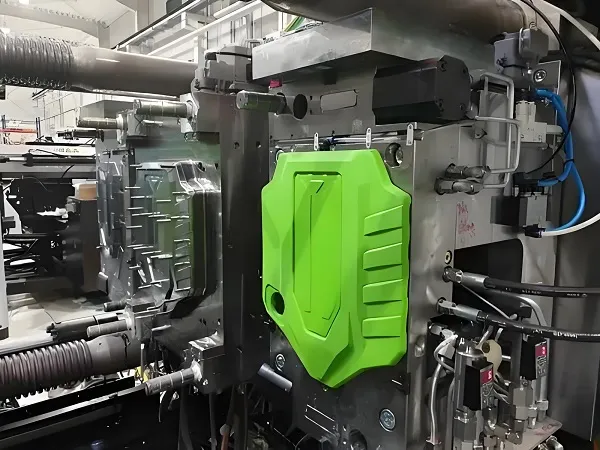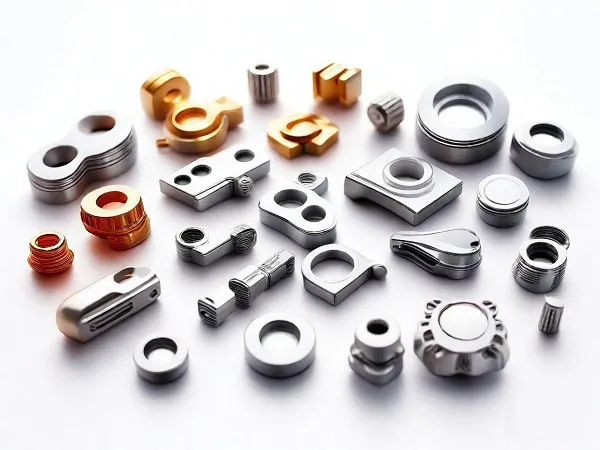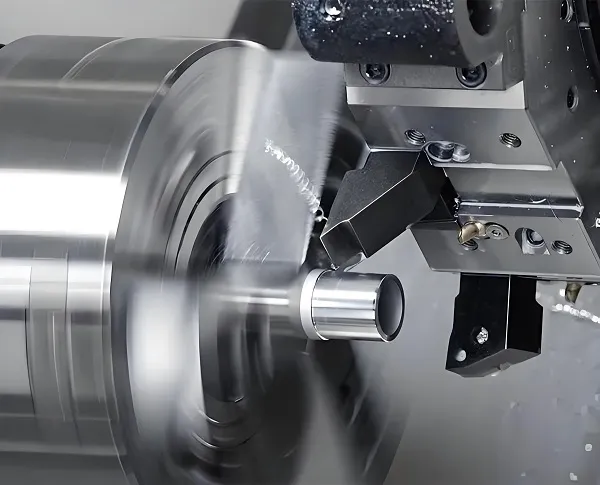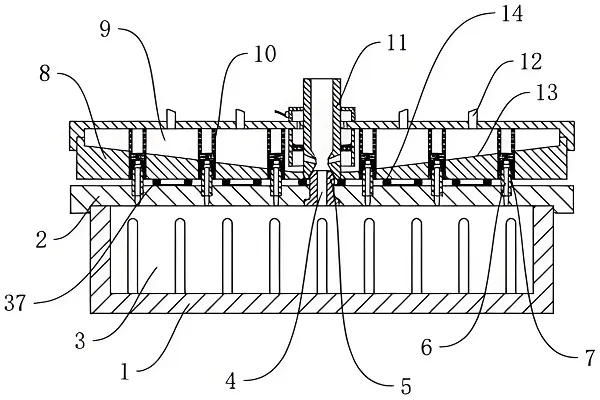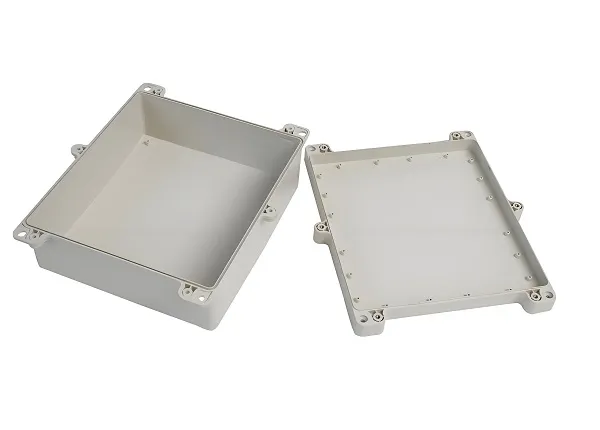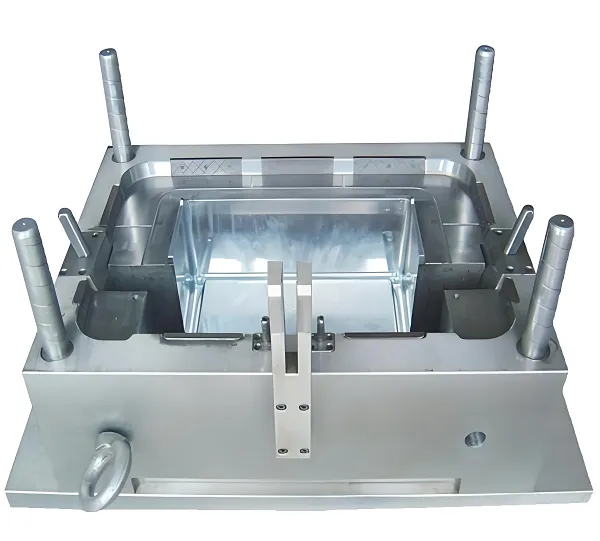Metal stamping is a widely used molding technique in industrial production, which uses the force of stamping machinery and a die as a sheet metal forming tool to plastically deform the sheet metal by applying pressure to obtain a part of the desired shape and size. The following is a detailed explanation of metal stamping:
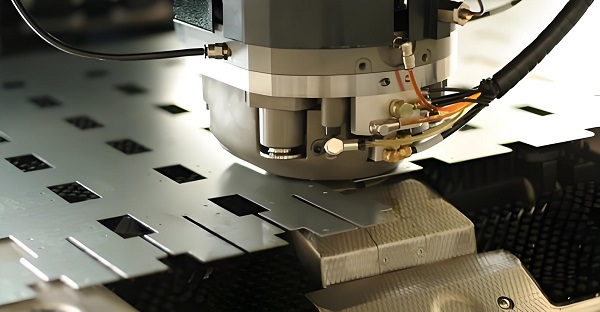
1. Definition and Principle
Metal stamping is a manufacturing process in which a single metal stamping die or a series of metal stamping dies are used to form a metal sheet into a workpiece of three-dimensional dimensional shape. The basic principle is to use a stamping press to place the sheet metal between the dies and cause plastic deformation of the metal by applying pressure to obtain the desired shape and size of the part. During the stamping process, the sheet metal is subjected to pressure and its internal grain structure is rearranged to achieve material flow and molding.
2. Materials
There is a wide variety of materials used in the metal stamping process, each with its own unique physical and chemical properties for different application scenarios.
Aluminum: Aluminum is a lightweight, high-strength material with good ductility and corrosion resistance. Common aluminum alloys such as 1100, 3003, 5052 and 6061 exhibit good forming properties during stamping. For example, 6061 aluminum alloy can be heat-treated for higher strength and is suitable for parts with high strength requirements. In the aerospace and automotive industries, aluminum stampings are widely used for their lightweight properties, which help improve fuel economy and reduce carbon emissions.
Stainless Steel: Stainless steel is favored for its excellent corrosion resistance and aesthetic appeal. Stainless steel 304 and 316 are two common types that exhibit good toughness and molding ability during the stamping process. Stainless steel stampings are widely used in the medical, food and chemical industries for their hygienic properties and corrosion resistance to meet the needs of specific industries.
Mild Steel: Mild steel has become a common material used in metal stamping due to its low cost and high strength. It is suitable for mass production and easy to process into various shapes. Mild steel stamping parts occupy an important position in automotive, construction and home appliance fields, such as automobile body structure parts, home appliance shells and so on.
Copper and Brass: Copper has good electrical and thermal conductivity, as well as being easy to mold, making it suitable for the manufacture of precision electronic components. Brass, as a copper-zinc alloy, inherits many of the advantages of copper and has higher hardness and wear resistance. In hardware stamping, copper and brass are often used to make connectors, heat sinks and other electronic components.
3.Manufacturing process
Metal stamping process is a processing method based on plastic deformation of metal, using molds and stamping equipment to apply pressure to the metal sheet to produce plastic deformation or separation. The specific process flow is as follows:
Material preparation: select suitable metal materials according to product requirements and carry out necessary pre-treatment, such as cutting, cleaning and calibrating.
Mold design and manufacture: design the stamping mold according to the product drawing, including the upper mold, lower mold, guide pillar and other components. The manufacturing accuracy of the mold directly affects the size and shape accuracy of the stamped part. Generally speaking, the manufacturing precision of the mold can reach ±0.01mm.
Stamping molding: The metal sheet is put into the stamping machine and deformed into the required shape by the stamping action of the die. During the stamping process, the material undergoes plastic deformation under pressure in the mold, and the finished part is finally formed. The stroke rate of the press can be tens to hundreds of strokes per minute, depending on the type and size of the press.
Subsequent treatments: Stamped parts are subjected to subsequent treatments such as deburring, sandblasting, plating or painting to improve surface quality and corrosion resistance. These treatment steps can be selected and adjusted according to customer needs and product requirements.
4. Suitable fields
The metal stamping process is widely used in a number of industries due to its efficiency, precision and cost-effectiveness:
Automotive industry: Stamped parts are an important part of automobile manufacturing, including body structure parts, chassis components, engine parts, etc.. According to statistics, about 70% of the parts in a car are manufactured through stamping process.
Consumer electronics: The shells, buttons and internal components of consumer electronics such as smartphones, tablet PCs and laptops are mostly manufactured by stamping process. These parts need to be dimensionally accurate, aesthetically pleasing and cost-effective, and stamping meets these needs.
Medical equipment: Surgical instruments such as scalpels, forceps and clamps, as well as components for medical equipment such as X-ray machines and MRI scanners, are also often manufactured using stamping processes. These components require high precision and hygienic performance, and the stamping process ensures product quality and safety.
Aerospace: Aircraft components such as outer skins, engine parts, and satellite structural components are manufactured using high-precision stamping processes. These parts require light weight, high strength and corrosion resistance, and stamping process can meet these special needs.
New Energy Vehicles: With the rapid development of new energy vehicles, the demand for components such as battery shells, connectors, chassis and body panels is increasing. Stamping process has become an important choice for new energy vehicle parts manufacturing with its high efficiency, precision and cost-effectiveness.
5.Product Advantages
The product advantages of metal stamping process are mainly reflected in the following aspects:
Efficient mass production: stamping process can realize tens to hundreds of stamping strokes per minute, which greatly improves the production efficiency. At the same time, the application of automated production lines further reduces labor costs and is suitable for mass production.
High Precision: The precision design of molds and the rigorous control of equipment ensure the high precision of stamped parts. Generally speaking, the dimensional accuracy of stamped parts can reach within ±0.05mm, which meets the precision requirements of most industrial products.
High material utilization rate: less waste in the stamping process, and can be recycled, in line with the concept of green production. According to statistics, the material utilization rate of metal stamping process can reach more than 80%.
Low cost: due to high production efficiency, high material utilization rate and high degree of automation, the cost of stamping process is relatively low. This makes the stamped parts have a certain price advantage in the market competition.
6. Process and Cost
Cost estimation for metal stamping projects involves a number of aspects, including material costs, tooling costs, labor costs, equipment depreciation and overheads. The following is a simplified cost estimation process:
Determine the project specifications: Define the key parameters such as the size, shape, material, quantity and accuracy requirements of the stamped part to provide basic data for cost estimation.
Calculate the material cost: Based on the size and quantity of the stamped part, combined with the density and unit price of the metal material, the total cost of the required material is calculated. In addition, the wastage rate and recycling rate of the material should also be considered to ensure the accuracy of the cost estimation.
Evaluating tooling costs: Tooling is a key piece of equipment in the stamping process, and its cost accounts for a large portion of the total project cost. Factors such as the complexity of the tooling, materials, and manufacturing precision will all affect the tooling cost. Therefore, a detailed assessment of the design, manufacturing and commissioning costs of the tooling is required for cost estimation.
Consider labor cost: Although the stamping process is highly automated, a certain number of operators and technicians are still required. Labor costs include wages, benefits, training and other costs, which should be estimated according to the actual situation of the local labor market.
Calculate equipment depreciation and overhead costs: stamping equipment is a long-term investment, and its depreciation costs should be apportioned to each item. In addition, indirect costs such as plant rent, utilities, maintenance and management fees should also be considered. These costs are not directly included in the product cost, but have an important impact on the overall operating costs of the enterprise.
Comprehensive cost estimation: add up the above costs to arrive at the total cost of the metal stamping project. At the same time, it is also necessary to consider market competition, raw material price fluctuations and other uncertain factors, leaving a certain margin for cost estimation.
Metal Stamping Service FAQ
Q1:How to ensure the dimensional accuracy of parts during metal stamping process?
A1: The dimensional accuracy of parts in metal stamping process is mainly determined by the manufacturing accuracy of the mold and the control accuracy of the stamping equipment. When designing the molds, the dimensional and shape tolerances of the parts should be fully considered to ensure that the manufacturing accuracy of the molds meets the requirements. At the same time, the stamping equipment should be equipped with advanced control systems and detection devices to monitor and adjust the parameters in the stamping process in real time to ensure the dimensional accuracy of the parts.
Q2:What are the reasons and solutions for burrs on the surface of stamped parts?
A2: The main reasons for burrs on the surface of stamped parts are excessive die clearance, wear and tear of the die edge, and too fast stamping speed. The solutions include adjusting the die clearance to a reasonable range, replacing the worn die edge in time, and reducing the stamping speed appropriately. In addition, deburring process can also be used for follow-up treatment of stamped parts to improve surface quality.
Q3:How to adapt metal stamping process to the processing needs of different materials?
A3:Metal stamping process to adapt to the processing needs of different materials is mainly achieved by adjusting the mold design, stamping parameters and subsequent treatment process. The physical and chemical properties of different materials vary greatly, so in the stamping process, we need to select the appropriate mold material and structure according to the characteristics of the material, adjust the stamping speed, pressure and lubrication conditions and other parameters, in order to ensure the quality of the stamped parts and production efficiency. At the same time, it is also necessary to choose the appropriate follow-up treatment process according to the corrosion resistance and aesthetic requirements of the material.
Q4:How to estimate the cost of stamping process?
A4:The cost estimation of stamping process involves various aspects such as material cost, tooling cost, labor cost, overhead cost, etc.. Accurate cost estimation requires detailed definition of project specifications and consideration of various cost factors.

